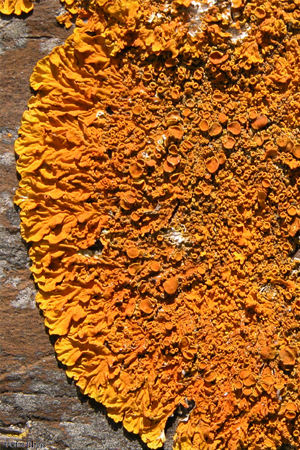
|
 |
Lichens result from a symbiosis between a fungus and a photosynthetic partner, most commonly green algae. Lichens fill the place where they live with colour: trunks and branches (epiphytes), rocks (saxicolous) or soil (terricolous). They also grow on man-made structures, such as roof tiles and walls. They grow in many shapes, looking like small shrubs (fruticose), leafs (foliose) or crusts (crustose). Lichens are ecological similar to bryophytes being poikilohydric (their water content changes with the atmospheric one). Because lichens do not have roots, they absorb all water and nutrients from the atmosphere. With those nutrients, lichens also take pollutants, which have different effects on each species. Some pollutants are lethal to nearly all species, others however have contrasting effects, such as nitrogen: some species are nitrophytic, benefiting from nitrogen deposition, while others are oligotrophic, harmed by nitrogen. Given these responses, lichens are considered excellent monitors of atmospheric conditions, and their diversity is frequently used as an ecological indicator of air quality and even of the general quality of an ecosystem. |

|